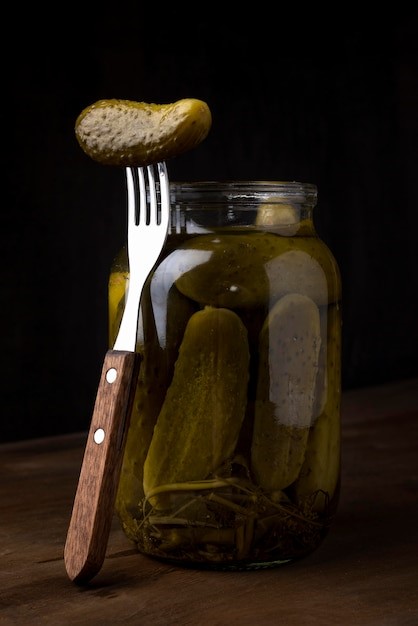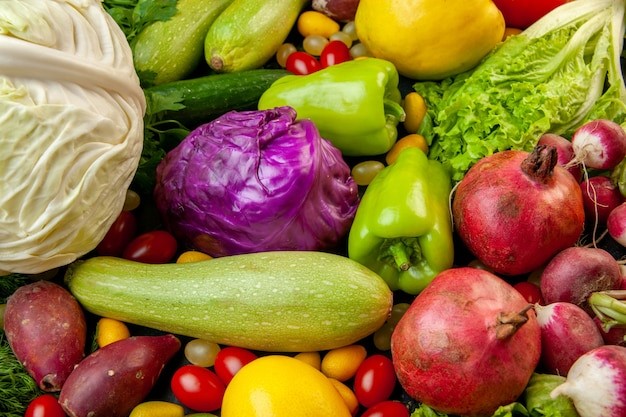Tyramine in Foods: A Common Migraine Trigger You Should Know About
Tyramine in Foods: A Migraine Trigger to Watch Out For
Millions of individuals worldwide suffer from migraines, a crippling neurological disorder that frequently results in excruciating pain, nausea, and sensitivity to light and sound. It is commonly recognized that various triggers can cause or worsen migraine attacks, even if the precise ethology of migraines is still unknown. Dietary variables are becoming more widely acknowledged as a major contributor to these triggers. Tyramine, a naturally occurring chemical present in a variety of foods and beverages, is one such dietary ingredient that has attracted interest.
According to the top migraine specialist in Mumbai Tyramine can be a strong migraine trigger for many people, which helps migraine attacks start. This page discusses the relationship between tyramine and migraines, foods that contain tyramine, and dietary strategies that migraineurs can use to lower their chance of having an attack.
What is Tyramine?
The breakdown of the amino acid tyrosine results in the formation of tyramine, a derivative of amino acids. It is frequently present in processed, fermented, and aged foods as well as in some alcoholic drinks. By affecting the release of norepinephrine, a neurotransmitter that regulates blood vessel constriction, tyramine contributes to blood pressure regulation. Tyramine can alter blood vessels in the brain in people who are susceptible to it, which may result in a migraine episode.
Tyramine is typically metabolized by the body using an enzyme known as monoamine oxidase (MAO). However, this process might not function well in tyramine-sensitive individuals, which could result in an accumulation of tyramine in the body. This can set off a series of events, such as variations in blood pressure and flow, which are thought to play a role in migraine onset.
Tyramine and Migraines: The Connection

As per the best migraine doctors in Mumbai, Tyramine’s impact on the brain’s neurotransmitter balance and vascular system is the basis for the association between it and migraines. Changes in the blood vessels in the brain and the release of neurotransmitters like serotonin and norepinephrine are thought to be linked to migraine. Tyramine can create the conditions that may produce a migraine by causing blood vessels in the brain to contract and then dilate because it affects the release of norepinephrine.
Furthermore, studies indicate that migraineurs can have a reduced threshold for specific stimuli, such as food triggers like tyramine. According to studies, eating meals high in tyramine can cause a migraine in a matter of hours for certain people. Tyramine sensitivity is not present in all migraineurs, although it is a known trigger for a sizable percentage of those who experience migraines.
Foods High in Tyramine
As food ages, ferments, or goes through certain processing, its tyramine content may rise. For this reason, a lot of foods high in tyramine are fermented, aged, or cured. To prevent potential triggers, migraineurs must be aware of which foods contain high levels of tyramine.
The following are some of the most popular foods high in tyramine:
1. Aged Cheeses

One of the most well-known sources of tyramine is aged cheeses. As cheese ages, the breakdown of proteins releases tyramine. Examples of high-tyramine cheeses include:
- Cheddar
- Swiss
- Blue cheese
- Parmesan
- Brie
- Gouda
Fresh cheeses, like mozzarella and ricotta, typically contain lower levels of tyramine and may be safer for individuals sensitive to this compound.
2. Processed and Cured Meats

Meats that are processed, cured, or aged also tend to be high in tyramine. These include:
- Salami
- Pepperoni
- Hot dogs
- Bacon
- Sausages
- Smoked or dried fish
The curing process used to preserve these meats often involves fermentation, which increases tyramine levels. Fresh meats, poultry, and fish, on the other hand, have lower levels of tyramine and are less likely to trigger migraines.
3. Fermented Foods

Fermentation is a process that enhances the flavour and shelf life of foods, but it also leads to higher tyramine levels. Some fermented foods that may trigger migraines include:
- Sauerkraut
- Kimchi
- Miso
- Soy sauce
- Pickles
- Fermented tofu
These foods can be problematic for those with tyramine sensitivity, so it is important to pay attention to how they affect your migraine patterns.
4. Alcoholic Beverages

Certain alcoholic drinks, particularly those that are fermented or aged, can contain high levels of tyramine. Alcohol itself is a known migraine trigger, and when combined with tyramine, it can be a potent catalyst for a migraine attack. Beverages to watch out for include:
- Red wine
- Beer (especially craft or homebrewed varieties)
- Champagne
- Whiskey
- Sherry
Red wine, in particular, is a common trigger for many migraine sufferers due to its combination of tyramine, tannins, and sulphites.
5. Certain Fruits and Vegetables

Some fruits and vegetables naturally contain higher levels of tyramine, particularly when they are overripe or have undergone spoilage. Common offenders include:
- Avocados (especially when overripe)
- Bananas (particularly the peel)
- Tomatoes
- Eggplant
- Spinach
- Fava beans
While fresh fruits and vegetables are an essential part of a healthy diet, those sensitive to tyramine may need to avoid these specific items, particularly if they are overripe or processed.
6. Certain Beverages

Apart from alcohol, tyramine and other substances that can worsen migraine symptoms can be found in some other drinks. For instance, individuals with tyramine sensitivity may experience headaches as a result of drinking caffeinated beverages like strong coffee or tea. It’s crucial for migraine sufferers to keep an eye on how these drinks affect them, particularly if they consume significant amounts of them.
Managing Tyramine Sensitivity and Migraine Triggers
Those who are tyramine sensitive may find that controlling their diet is essential to avoiding migraines. The following techniques will help you cut back on tyramine consumption and lower your chance of getting a migraine:
1) Keep a Food Diary
Maintaining a thorough food journal is one of the best methods to determine whether tyramine is a migraine trigger. You can identify particular foods or drinks that might be connected to your migraine episodes by keeping a journal of everything you eat and drink, as well as any migraine symptoms. This can eventually give you important information about the meals you should limit or stay away from.
2 ) Choose Fresh Over Aged or Processed Foods
Choosing fresh, unprocessed meals is an effective way to reduce tyramine intake because tyramine levels rise as foods age or ferment. Select fresh fruits and vegetables that aren’t overripe, and opt for fresh meats, poultry, and fish rather than cured or smoked ones. When it comes to cheese, older cheeses are not as good as fresh cheeses like cottage cheese or mozzarella.
3) Read Food Labels Carefully
It’s critical to carefully examine food labels because tyramine can be concealed in packaged and processed meals. Look for terms like “smoked,” “aged,” or “cured” that suggest fermentation or aging. Avoiding highly processed meals is usually a good technique for managing migraines because they typically contain preservatives and additives that can further increase the risk of migraines.
4 ) Limit Alcohol Consumption
Many people know that alcohol causes migraines, and some alcoholic drinks, such as beer and red wine, have high tyramine levels. Limiting or avoiding alcohol consumption may be beneficial if you have a history of migraines. Although moderation is crucial, some people may find it safer to choose clear liquors like vodka or gin, which usually have lower tyramine contents.
5) Monitor Portion Sizes
Smaller doses of tyramine might not always cause a migraine, but higher doses might. If your diet includes foods or beverages that contain tyramine, consider cutting back on portion sizes to see if it helps avoid migraines. You can identify your individual threshold for tyramine by gradually modifying your diet to reduce your intake of this substance.
6 ) Consult a Healthcare Professional
Tyramine can be a major food trigger for a lot of people who have migraines. Tyramine, which is present in many aged, fermented, and processed foods and some drinks, might alter blood vessel function and neurotransmitter release, which may result in a migraine attack. Migraine sufferers can significantly lessen the frequency and intensity of their headaches by learning which meals are high in tyramine and implementing tyramine management techniques.
Tyramine’s function as a food trigger highlights the significance of customized migraine treatment, even though it is not the only cause of migraines. Migraine sufferers can better manage their food choices and experience fewer migraine attacks by monitoring dietary habits and collaborating closely with medical providers.
Migraine is treatable. It cannot be cured completely but the headaches could be reduced & the symptoms can lower down. But this would require proper treatment under expert migraine specialist in Mumbai. At the Restorative & Regenerative Medicine clinic at Jaslok hospital in Mumbaiyou can get treated with the best doctor in the town for migraine. Prof. (Dr.) Paresh K Doshi is Director of Department of Regenerative and Restorative Medicine clinic in Mumbai. Dr. Paresh Kishorchandra Doshi , M.S., M.Ch. is a leading neurosurgeon and a pioneer of stereotactic and functional neurological surgery in India. He was the first person to introduce Deep Brain stimulation therapy in India and is a leader in the field of Neuromodulation.
Choosing Jaslok Hospital means entrusting your well-being to a team of the best migraine doctors in Mumbai who prioritize your unique needs. They understand the toll migraines can take on your life, and committed to helping you regain control and restore your quality of life. Bid farewell to the tragedies of migraines.


